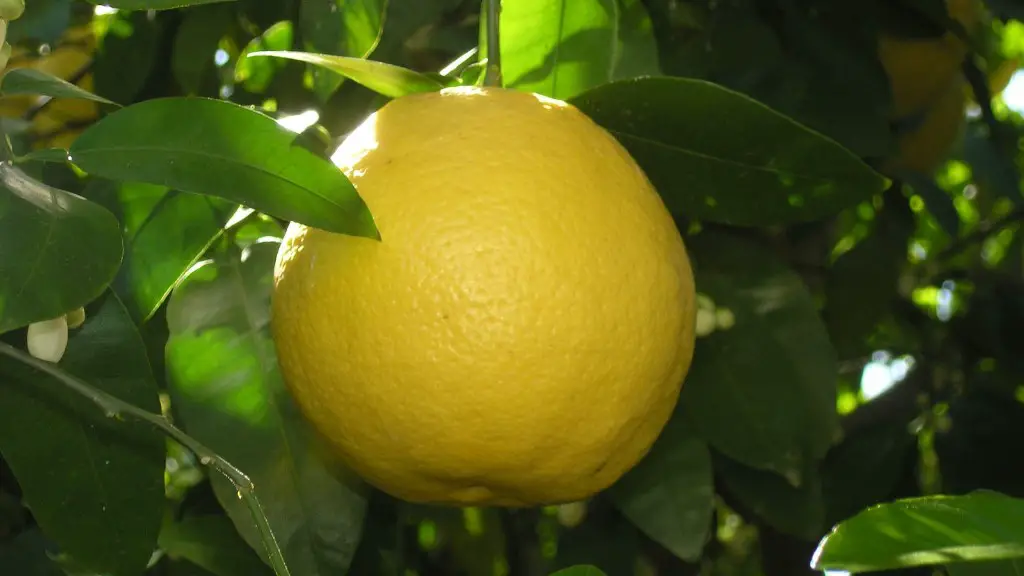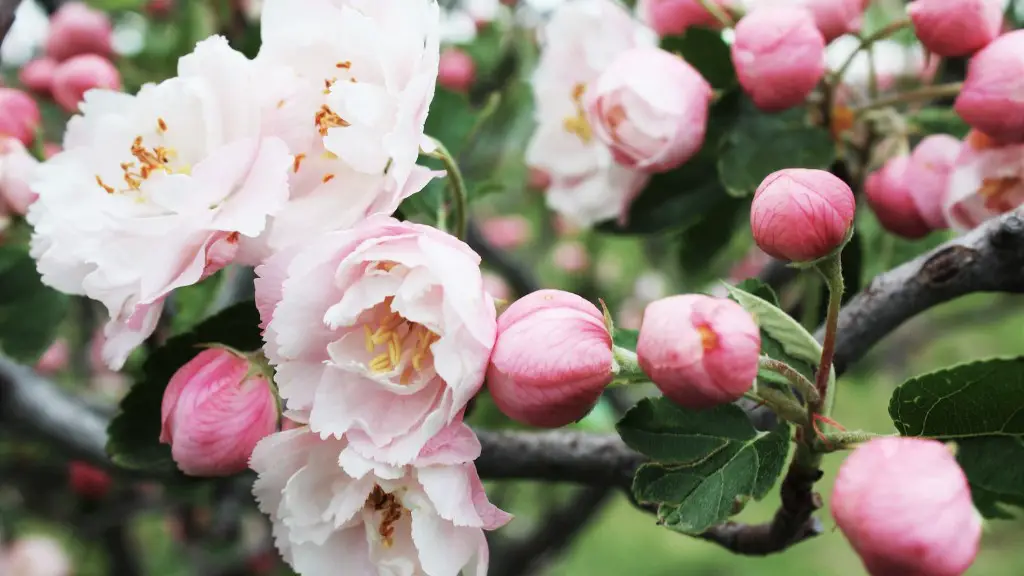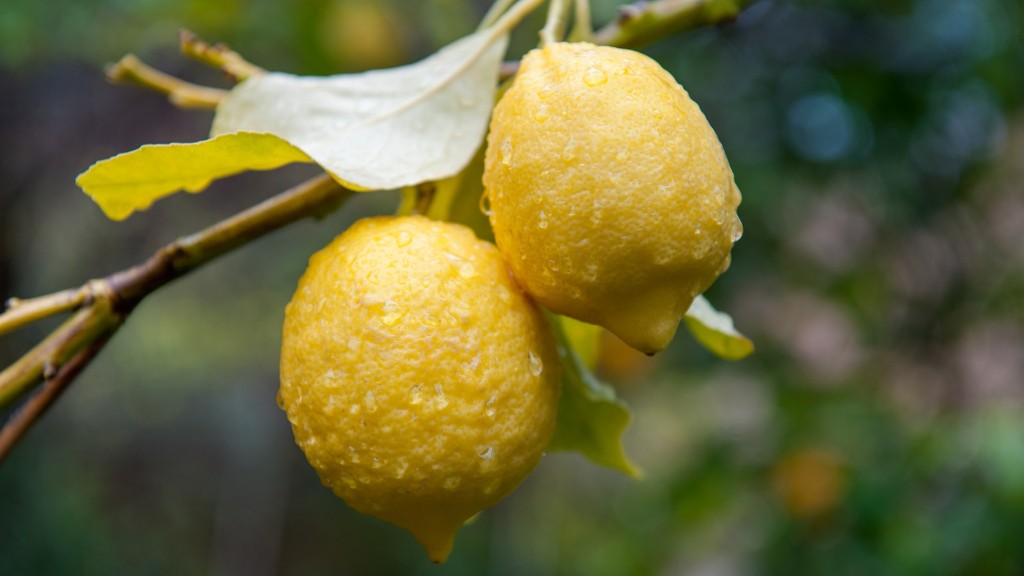Lemon trees are great additions to any garden; however, knowing when to expect the blooms can be difficult. Lemon tree owners want to know when to expect the blooms to appear because it provides them with an indication of when the fruit will be produced. Estimating when a lemon tree will bloom is linked to the local climate and can vary depending on the variety of the tree. In this article, we will provide information on when you can expect your lemon tree to bloom.
Generally speaking, lemon trees tend to bloom twice each year, usually in late spring and mid-summer. The exact date they will bloom is notoriously difficult to pinpoint, as it’s affected by a variety of factors, such as the type of variety of lemon tree and the local climate. Generally speaking, the blooms appear first on the tips of the branches in clusters of white or yellow-tinted flowers, which can last for up to two weeks.
To get an indication of when your lemon tree may be ready to bloom, you can assess the maturity of the tree. A mature tree is more likely to bloom more quickly than a young tree. Once you believe the tree is mature, you should start looking for signs of growth, such as new shoots, more abundant leaves and more densely packed branches. Once you believe your lemon tree is mature, you can start to expect the blooms to appear soon.
Once your lemon tree has started to bloom, you can expect the fruit to start to appear in the next few weeks. The time it takes for fruits to start showing up depends heavily on the climate, but generally they should appear a few weeks after the blooms have appeared. Regularly monitor your lemon tree to ensure that it has the optimal conditions to produce the best fruits.
In conclusion, it is rather difficult to predict exactly when your lemon tree will begin to bloom. However, you can increase your chances of predicting when it may produce the blooms by assessing its maturity and inspecting for signs of growth. Once the bloom has appeared, you can expect for fruit to follow shortly after.
When do Lemon Trees Reach their Maximum Potential?
Lemon trees are most productive once they reach the peak of their maturity. This is usually the time at which they produce the largest number of fruits and when they start to bloom most consistently. To assess the maturity of your lemon tree, inspect the leaves and branches. A mature tree will have darker and more glossy leaves, thicker branches, and more abundant foliage. It is also crucial to inspect your tree regularly to ensure that it has the optimal conditions to bloom and produce fruits.
In addition, how much your tree will be able to produce is also heavily dependent on its environment. If the soil is too moist, the flowers can be damaged, whereas too much sunlight can dry out the fruit. Therefore, it is important to ensure that your lemon tree has the optimal climate and soil conditions to maximize its potential.
Feed your lemon tree with composts, fertilizers and nutrients for growth, as well as water it regularly. Watch for any signs of pests or diseases and treat them appropriately. Additionally, make sure to prune the tree regularly to remove dying or diseased branches and to ensure proper airflow throughout the tree.
In conclusion, although the age of a tree plays a part in determining its maturity, the environment also plays an important role. To ensure that your lemon tree reaches its peak potential and produces the most blooms and fruits, you must ensure that you give it the right conditions and nutrients it needs to thrive.
Can I Make my Lemon Tree Bloom Sooner?
The exact date that a lemon tree will bloom is affected by many factors, such as the type of the tree, the climate and the soil conditions, and cannot be predicted with certainty. However, there are certain steps you can take to potentially make your lemon tree bloom sooner.
Firstly, assess the maturity of your tree. A mature tree is more likely to bloom sooner than a young tree. Also, inspect your lemon tree for any signs of growth, such as new shoots and leaves, that indicate the tree is about to bloom. Then, make sure to water your tree regularly and give it the nutrients it needs. Additionally, prune the branches regularly to ensure proper airflow and to remove any diseased or damaged branches.
If your tree still isn’t flowering, you can force it to bloom by inducing the right environmental conditions. Place your lemon tree in a sunny spot and expose it to direct sunlight, pay attention to its soil conditions and water it regularly. The right environment should help to push your tree to bloom sooner.
In conclusion, it is impossible to predict exactly when your lemon tree will bloom. However, you can increase your chances of predicting when it will produce the blooms by assessing its maturity and inspecting for signs of growth. Additionally, you can artificially induce the necessary conditions to make the tree bloom sooner.
What are the Best Conditions for Lemon Fruit Production?
Lemon trees produce best when given the optimal climate and soil conditions. The majority of lemon trees thrive best in sunny, well-drained soils where humidity is moderate to low. Also, make sure to water your lemon tree regularly and to fertilize it with composts, fertilizers and other nutrients.
In addition, try to keep the area where you plant your tree as weed-free as possible, as weeds can compete with the tree for nutrients. Also, make sure to prune your tree regularly to remove any dead or diseased branches, increase airflow throughout the tree and promote growth. Finally, if possible, protect the tree from heavy winds and frost, as these can damage the tree.
In conclusion, the key elements to consider when attempting to maximize the potential of your lemon tree are a sunny location, well-drained soil, moderate to low humidity levels and regular watering and pruning. With these conditions in place, your lemon tree should be able to thrive and produce a good quantity of fruit.
Do Lemon Trees Produce Fruit All Year-Round?
Generally speaking, lemon trees do not produce fruit all year round. Instead, in temperate climates, they tend to primarily bloom twice per year, in late spring and mid-summer, when they are in their peak. The reason for this is because during the cooler winter months, the tree must enter a dormant period in order to re-establish itself for the warmer months.
In warmer climates, the trees can produce fruit year-round, as long as they receive the right amount of sunlight and other necessary conditions. However, even in warmer climates, the production of fruit slows during the colder months and picks up again during the summer months.
In conclusion, in temperate climates, lemon trees will bear fruit twice per year and go dormant during the winter. However, in warm climates, the trees can potentially produce fruit year-round, as long as they are provided with the right conditions.
Do Different Lemon Types Bloom at Different Periods?
The moment at which different types of lemon trees will bloom depends on the variety of the tree and the local climate. Additionally, the time it takes for fruits to start showing up also varies depending on the variety. Generally speaking, some varieties of lemon trees may bloom as early as March or April, while others may bloom as late as the summer months.
The types of lemon tree that are most commonly found in gardens are the Eureka, Lisbon and Meyer lemon trees. Generally speaking, the Eureka produces blooms in late winter and shows fruits in late spring, the Lisbon blooms in early spring and shows fruits in late spring, and the Meyer blooms in late spring and bears fruit through the summer months.
In conclusion, different types of lemon trees bloom at different periods and can produce fruits in different seasons. For example, the Eureka blooms in late winter and has fruits in late spring, whereas the Meyer blooms in late spring and produces fruit through the summer months.




